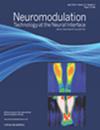Closed-Loop Deep Brain Stimulation Platform for Translational Research
IF 3.2
3区 医学
Q2 CLINICAL NEUROLOGY
引用次数: 0
Abstract
Objective
This study aims to facilitate the translation of innovative closed-loop deep brain stimulation (DBS) strategies from theory to practice by establishing a research platform. The platform addresses the challenges of real-time stimulation artifact removal, low-latency feedback stimulation, and rapid translation from animal to clinical experiments.
Materials and Methods
The platform comprises hardware for neural sensing and stimulation, a closed-loop software framework for real-time data streaming and computation, and an algorithm library for implementing closed-loop DBS strategies. The platform integrates hardware for both animal and clinical research. The closed-loop software framework handles the entire closed-loop stimulation, including data streaming, stimulation artifact removal, preprocessing, a closed-loop stimulation strategy, and stimulation control. It provides a unified programming interface for both C/C++ and Python, enabling secondary development to integrate new closed-loop stimulation strategies. Additionally, the platform includes an algorithm library with signal processing and machine learning methods to facilitate the development of new closed-loop DBS strategies.
Results
The platform can achieve low-latency feedback stimulation control with response times of 6.23 ± 0.85 ms and 6.95 ± 1.11 ms for animal and clinical experiments, respectively. It effectively removed stimulation artifacts and demonstrated flexibility in implementing new closed-loop DBS algorithms. The platform has integrated several typical closed-loop protocols, including threshold-adaptive DBS, amplitude-modulation DBS, dual-threshold DBS and neural state–dependent DBS.
Conclusions
This work provides a research tool for rapidly deploying innovative closed-loop strategies for translational research in both animal and clinical studies. The platform’s capabilities in real-time data processing and low-latency control represent a significant advancement in translational DBS research, with potential implications for the development of more effective therapeutic interventions.
用于转化研究的闭环深层脑刺激平台。
目的:本研究旨在通过建立研究平台,促进创新闭环脑深部刺激(DBS)策略从理论到实践的转化。该平台解决了实时刺激伪影去除、低延迟反馈刺激以及从动物实验到临床实验的快速转化的挑战。材料和方法:该平台包括用于神经传感和刺激的硬件,用于实时数据流和计算的闭环软件框架,以及用于实现闭环DBS策略的算法库。该平台集成了用于动物和临床研究的硬件。闭环软件框架处理整个闭环增产作业,包括数据流、增产工件去除、预处理、闭环增产策略和增产控制。它为C/ c++和Python提供了统一的编程接口,使二次开发能够集成新的闭环刺激策略。此外,该平台还包括一个带有信号处理和机器学习方法的算法库,以促进新的闭环DBS策略的开发。结果:该平台可实现低潜伏期反馈刺激控制,动物实验和临床实验的响应时间分别为6.23±0.85 ms和6.95±1.11 ms。它有效地消除了刺激伪影,并展示了实现新型闭环DBS算法的灵活性。该平台集成了几种典型的闭环协议,包括阈值自适应DBS、调幅DBS、双阈值DBS和神经状态依赖DBS。结论:这项工作为快速部署创新闭环策略在动物和临床研究中的转化研究提供了一种研究工具。该平台在实时数据处理和低延迟控制方面的能力代表了转化DBS研究的重大进步,对开发更有效的治疗干预具有潜在意义。
本文章由计算机程序翻译,如有差异,请以英文原文为准。
求助全文
约1分钟内获得全文
求助全文
来源期刊

Neuromodulation
医学-临床神经学
CiteScore
6.40
自引率
3.60%
发文量
978
审稿时长
54 days
期刊介绍:
Neuromodulation: Technology at the Neural Interface is the preeminent journal in the area of neuromodulation, providing our readership with the state of the art clinical, translational, and basic science research in the field. For clinicians, engineers, scientists and members of the biotechnology industry alike, Neuromodulation provides timely and rigorously peer-reviewed articles on the technology, science, and clinical application of devices that interface with the nervous system to treat disease and improve function.
 求助内容:
求助内容: 应助结果提醒方式:
应助结果提醒方式:


